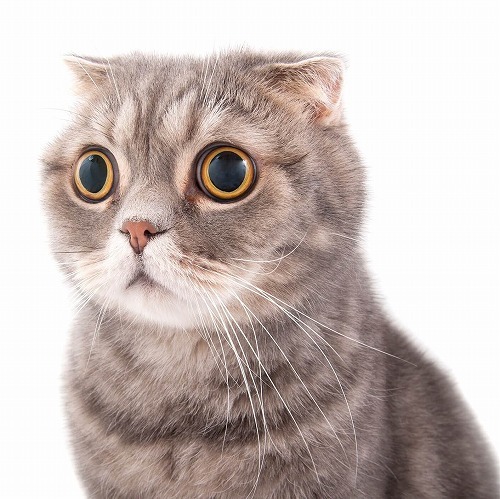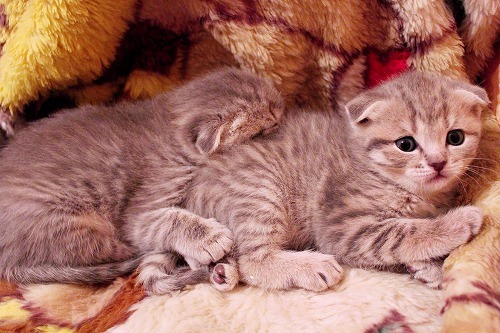|
|

This breed has been having a bit of social media notoriety, with celebrities like Taylor Swift having pet Scottish fold cats. The Scottish fold has become very trendy again with many breeders having waiting lists over 3 months to get a kitten.
1. History
As the name suggests the Scottish fold was found in Scotland. The breed itself was only recognized in the 1960’s and quickly gained popularity soon after. Sadly, the Scottish fold has genetic defects of the spine and the lower legs so quickly after its discovery the breed was unable to be shown in the UK. All of the Scottish fold cats of today can actually be traced back to Suzi, the first Scottish fold in Scotland.
2. Appearance
As the name suggests the ears are folded over that can make it a challenge for the cat to clean their ears. The flap is actually made of cartilage and isn’t as soft as you would assume. The face is obviously very rounded to make a teddy bear appearance. The body is somewhat compact but features of inbreeding are the lowered back legs and drooped tail.
They can be both shorthair and long hair, depending on breeding with others.
Traditional breeding leads to black, white, charcoal and red coloring with a red nose and black outlines of the eyes. Cross breeding has led to more unique colors and markings.

3. Personality
These are the definition of a lap cat. They are incredibly affectionate and known for being quite gentle. They tend to be less inclined to have cat-fights or try to assert dominance.
They often can be found in strange positions as well, because of their muffled hearing they often need to move to different places in order to hear people and their food correctly.
4. Genetic Defects
- Obviously the ears are an area owners must take special caution with, ensuring the ear is clean and also there is no infection present.
- At times when two Scottish fold cats have a litter, the kittens may have spinal defects. This causes low legs and a flat spine.
- Additional genetic heart, liver and kidney checks should be done annually with this breed.
- They are more prone to deafness than most cats.
5. Things to note
- They generally have a lifespan of 8-10 years, compared to 16 years for a domestic shorthair.
- They need additional maintenance for their ears as well as annual vet checks for their liver, heart, lungs and kidneys.
- There will be a waitlist to get these kittens
- They are very good with other cats
- Require minimal grooming as they self groom and are typically shorthaired.
- They are best as an indoor cat, they are very frequently stolen and because of their ears they are less skilled to get away from predators and thus get an infection or get into a fight.
- Bizarrely there are three different types of ‘folds’ depending on where the bend is located on the ear.
- They are more likely than other breeds to have different colored eyes, this is another interesting gene passed on by Suzi the original fold.
Tag
Tag